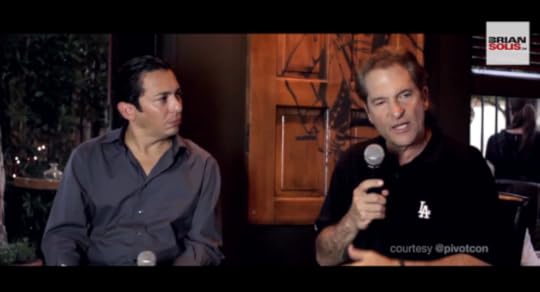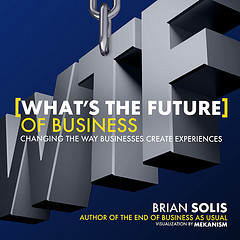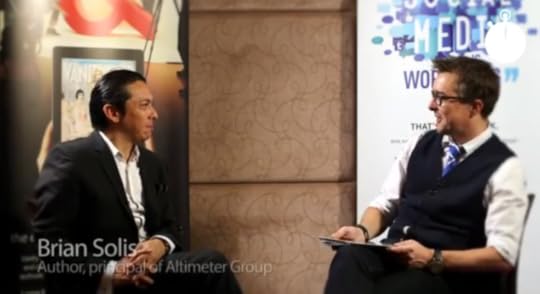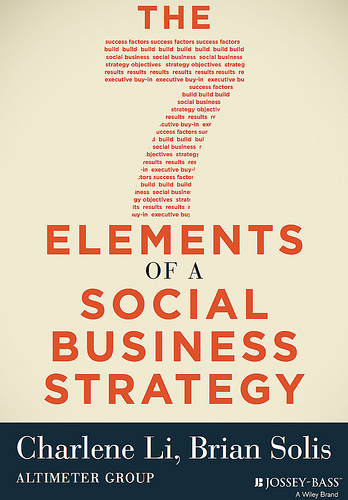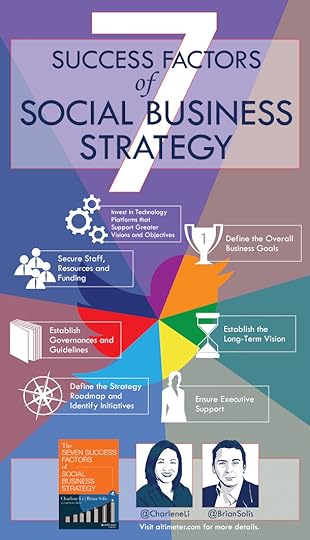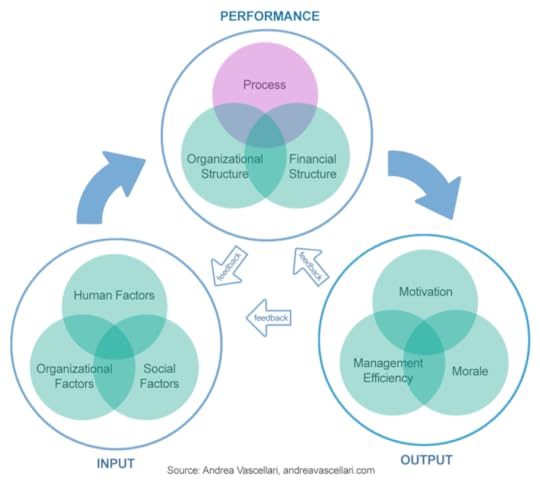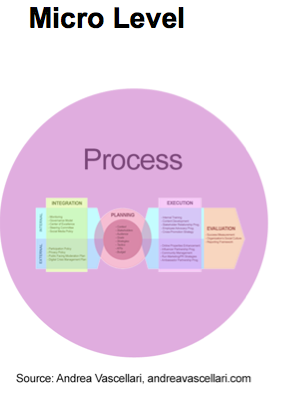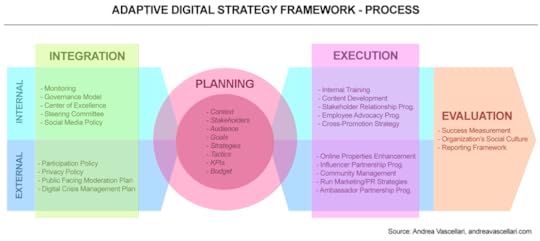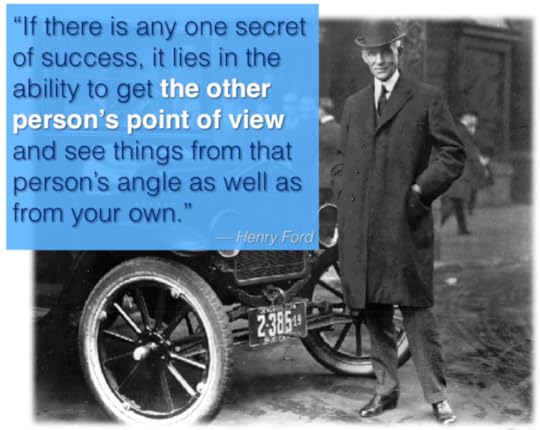Brian Solis's Blog, page 114
October 22, 2013
Altimeter Group’s State of Social Business 2013 Report
Each year, The Altimeter Group hosts an annual Social Business survey to learn how social media is evolving within enterprise organizations. Data is then compared to previous reports providing a sense of movement to the numbers and also a developing benchmark for our analysts and clients. Our last survey was studied in Q3 2013 and also Q4 2012, the latter was used to provide context to a report published by Charlene LI and me in March 2013, “The Evolution of Social Business: Six Stages of Social Business Transformation.”
We are now making the data available to the public for free use under Creative Commons (cc) as part of our open research program. The figures included in this report are also compared to previous survey findings from 2011 and 2010.
Summary
Analysis of our survey results reveal that social media is extending deeper into organizations and, at the same time, strategies are maturing. What was previously a series of initiatives driven by marketing and PR is now evolving into a social business movement that looks to scale and integrate social across the organization. The following report reveals how businesses are expanding social efforts and investments.
As social approaches its first decade of enterprise integration, we still see experimentation in models and approach. There is no one way to become a social business. Instead, social businesses evolve through a series of stages that ultimately align social media strategies with business goals.
Our hope is that the data shared in this report provides some perspective on where your company is today so that you can chart your own course for social business evolution. Some ways to use the data include:
1. Benchmark where you are compared to the various business stages shared in this report.
2. Document existing challenges and opportunities that you will need to address for your 2014 social business plan.
3. Determine how social strategies can better align with business objectives and priorities.
4. Finally, follow along with Altimeter Group’s Seven Success Factors of Social Business Strategy to expedite your transition from social media to social business.
Highlights of Findings
In terms of social business maturity, most organizations are “intermediate,” with only 17% who are truly strategic in the execution of their social strategies.
The lack of clear leadership, organization, and strategy means that many organizations experience some form of “social anarchy,” of siloed, uncoordinated social efforts.
More companies are moving to the Multiple Hub and Spoke model to organize their social business programs, up from 18% in 2010 using this model to 23.6% in 2013.
Most dedicated social media teams continue to report to Marketing (40%) or Corporate Communications/PR (26%). But now, 13 different departments around the organization are seeing dedicated staff work on social initiatives.
Companies are committing more headcount to social media across all sizes of companies. The biggest jump is for companies with more than 100,000 employees, which now report an average of 49 full-time employees (FTEs) supporting social media in the organization, compared to 20 in 2010.
Top priorities for social include scaling for engagement, integrating data, and training/ education around social.
Measuring the impact of social is maturing, with over half of organizations able to track the impact of social on marketing efforts.
Lack of employee training around social media policies remains a significant risk area — only 18% of companies said that their employees have a good or very good understanding of their social media policies.
The State of Social Business 2013
[Report] The State of Social Business 2013: The Maturing of Social Media into Social Business from Altimeter Group Network on SlideShare

October 20, 2013
Change happens to you and because of you
I’ve come to learn that having opinions, insights, and standing for something is as taxing as it is rewarding. Like you, I am inspired by what surrounds me, by history and by the possibilities that open up as a result of my experiences. But, it is not easy. And, I suppose it’s not supposed to be.
I too feel challenged by what I should say versus what has already been said, yet also shaped by what should not be vocalized. I’ve come to learn however, that the relationship between self expression and inner monologue defines one’s character. It is what’s is said and what is not said that defines impressions and ultimately the perceptions of who we are and for what it is we stand or hope to achieve.
Satisfaction or dissatisfaction with oneself is trumped by our ability to learn and teach together.
My personal and professional struggles are often tied to emotional rigors that spin me through cycles of vision, validation, vindication, vulnerability and vanity. These 5 V’s either pull me to learn, participate and teach or push me into a realm of either complacency or uncertainty, both of which result into creative stillness. These 5 V’s however coalesce and produce different results based on the measure we apply to our own actions, reactions and inactions.
Impressions are linked to expressions and ultimately they are ours to define.
If you’re not provocative in some way, how can you possibly stand out to inspire someone else? This is a time for you to choose what it is you do with the inevitable reactions of encouragement, criticism, or resentment you will receive as you discover, share and grow. Take from each experience and move in a direction where you invest and receive value that inspires you and those around you. This is a time to be your own hero…to both inspire and be inspired.
“The impact of your work is the result of the balance you place on reacting to, learning from, and transcending teachers, critics and supporters.”
Change happens to you and because of you. It is what perpetually happens next that defines your character and ultimately your legacy.
This is your time.

October 16, 2013
Social Business is Dead! Long Live What’s Next! – Chris Heuer
Guest post by Chris Heuer, CEO, Alynd (@chrisheuer)
When I heard Marc Benioff was giving up on pursuit of “Social Enterprise” as the focus of Salesforce’s marketing, I remarked to my Deloitte colleagues that “Social Business has won the day.” I felt vindicated after being an early proponent advocating for organizations to become Social Businesses, believing that IBM’s marketing might would be the catalyst to consolidate the movement around this language and meaning.
Six months after leaving Deloitte to start a Social Business consulting network and now a Social Business SaaS company, I find myself eating my words, though we are only changing the positioning not the actual services or software concept. Through my conversations with colleagues and executives at large enterprises, the words Social Business have not struck the right chord with leaders. The movement has failed to earn their faith, trust and budgets in a significant way. While the ideas behind the moniker are invaluable in defining the future of work, most large companies simply aren’t buying into or investing in Social Business transformation efforts in more than a piecemeal sort of way
Despite having a legion of analysts and advocates connected by and promoting the #socbiz hashtag, I believe it is time to proclaim that Social Business is dead, or at least dying before our very eyes. I am not alone in this position, having discussed this at length with my AdHocnium and Alynd colleagues. In fact, while arguing that Social Business isn’t dead in a post from January of this year, friend and well regarded analyst Michael Fauscette in effect reaches a very similar conclusion as mine. While Stowe Boyd still remains an ardent supporter of the impact and power of social in the enterprise as he notes in this GigaOm post citing McKinsey’s Social Economy report, I think it’s just time for us to find a phrase that is more attractive to corporate leadership.
It’s not that the ideas are losing or that the goals are without merit, they are. The problem is that the deeper meaning and richer context is being lost on executives who still think the word “social” indicates a frivolous time-wasting pursuit. To them, it’s about what someone ate for lunch. Or it’s that thing their teenagers do to ignore them at the dinner table. Despite the Arab Spring, the customer revolution and an increasingly connected society which turns to Twitter with every earthquake or news event, the idea of being a Social Business has failed to break through the care barrier in most C-Suites.
Indeed, as I have heard from executives in charge of billion dollar lines of business, they “have people for that”. They have yet to see the bigger opportunity to seize competitive advantage or the risk to their business. It’s as if they were frogs being put into a pot of cold water being slowly brought to a boil. It’s not so painful that they need to make a massive investment to transform their organizations. They continue to make money and operate as they always have. That is the problem. The old model of organizational design and profit making is obsolete but it hasn’t yet completely or visibly failed for the people in charge.
If you talk to the Humans-who-are-called-Resources however, you would learn that corporations failed them long ago. Those on top looking down don’t see it or feel it of course. Or maybe it’s that they don’t want to see it. They are managing by spreadsheet. The cells holding the numbers serving as lenses into their world, unaware that they are merely shadows of the true reality cast on cave walls. In the view of too many executives, people are truly cogs in their machines of profit and luxury, fungible resources that can be easily swapped out or replaced as needed. Meanwhile, those ‘resources’ feel a sad truth to the phrase ‘getting chewed up and spit out by the machine.”
While using a different lens to reach this conclusion, further support of this assertion comes from a great un-bylined post on the Enterprise 2.0 Blog which concluded “Social Enterprise 2013/14 is the twilight of the over-hyped social business story but the dawn of the management (r)evolution.”
What happened? What’s happening?
In a world that is driven by leaders seeking to create, get ahead of, or respond to market trends and the latest buzz, Social Business has never really broken free. Whenever asked to name an exemplar of a great social business, or someone doing it well, most analysts struggle. “No one is completely there yet.” “Ford and IBM are getting close.” “Most orgs are seeing a spiky success, great in one area and lacking in others.” Kind of hard to build a movement of world changing proportions without a poster child or at least a way to simply explain the key outcomes being posited.
My bet on IBM was, in part, based on its success with eBusiness. Missing in my assessment was the realization of the complexity of the Social Business story. Being an eBusiness was simply about getting online to sell your stuff – if you didn’t do it, you were going to lose your position in the market. Social Business is about being more social, more connected, more human and so much more. By being more connected and transparent, we increase the flow of information inside and across the organization. By being more authentic and empathetic, we can increase trust with our peers and our clients. For the acolytes, becoming a social business is about the future of business, and how great everything could be if we fixed what’s wrong with the status quo. For others, who don’t have a clear view of what a successful Social Business looks like, its just another management fad with which they can’t be bothered with beyond the marketing department.
The trouble is, that even my description above, while better than some I have read, is still grasping at straws, or more aptly, it’s merely several statements made by the blind men describing the elephant. While true, its still about so much more, and it requires a more holistic view to truly understand the importance and value. Ayelet Baron recently delivered a great presentation on this subject entitled “Unlocking the Future of Work” that addresses the many other facets of what is needed for us to find our success in fixing what in my mind is most broken in large organizations. Hint: it’s a lot more than putting in some new social technology, and it’s much harder to ‘fix’ – it involves people!
The market leaders in the 21st century will need to focus on modernizing talent management, operational systems and organizational models for a fully connected society, where the social physics are fundamentally different than the one we lived in just over a decade ago. It starts with treating all people, especially those on the lowest rungs of the corporate ladder, with dignity and respect. It requires new systems of processed and technologies that are logical, sensible and fault tolerant. It requires leaders to govern their organizations much more transparently to earn the trust of ALL stakeholders, This is compounded by a need for the organizations be more agile, so that they may respond in real time to both opportunities and threats, and to empower employees to serve as authentic ambassadors of their brands in both situations.
The challenge is that most managers don’t trust their employees and don’t even want them speaking publicly about the company, lest they create litigation or a PR disaster. This state of affairs is a evidenced by the broken employer-employee relationship in many organizations that is in a downward spiral of distrust, resentment and passive aggressive or outright hostility as reflected in the dismal employee engagement surveys Gallup and many others have conducted.
Why would a senior executive who has made his annual bonus doing what he has always done invest a significant portion of their organization’s cash reserves into an ambiguous hard to express idea like Social Business, without a successful example, with many employees who they believe are just there for the paycheck, in a time of global economic uncertainty, when their profits and productivity have reached all time record highs against relatively depressed wages? Easy. They wouldn’t, and they won’t. At least not until an executive like Ford’s Alan Mulaly with a long term view is driven by a clear vision and understanding of the opportunity it represents instead of the words chosen to represent it.
You see, the words are problematic in even more ways than mentioned above. From the first time I used the phrase Social Business, I cringed a bit myself, knowing that the phrase, and Social Enterprise especially, was coined by Dr Muhammad Yunus of Grameen bank fame to represent an organization that had a social purpose at the core of its operations. Indeed, Marc Benioff cited this as one of his reasons for moving away from Social Enterprise at the time, having received a request to drop his attempts to trademark the phrase. This is the same point I personally argued with senior leaders after being hired by Deloitte Consulting to help lead the social media and ultimately social business efforts there.
In fact, it was that point and those conversations that eventually lead Deloitte’s then Deputy CTO Bill Briggs to coin the phrase “Postdigital Enterprise” to represent the broader concept embodied by an organization that fully and effectively deployed social, mobile, analytics, security and cloud technologies and methodologies. Sadly, those words have their own baggage and did not ignite a movement, though it is a practice area for Deloitte still. I was only cursorily involved in that Postdigital team, though I continued to advise them while sticking within the social business space and ultimately moving to engagement as my focus.
Don’t be fooled though, it’s not only a language problem that killed Social Business, it’s a cacophony of fundamental flaws in the system burdened by the very real nature of the power laws that direct our leader’s decisions and behaviors. While it would be great to blame the system and abdicate personal responsibility, it’s my fault too. And yours. And your middle managers. And your consultants. And everyone else who doesn’t raise their voice in support of fixing what’s broken. But even then, I do understand the challenge here in assigning blame so wantonly. Few are rewarded for focusing on such nebulous matters instead of putting all their energy into meeting their key metrics that drive their annual bonuses, and their boss’ bonuses, and their boss’ bonuses and so on.
Our experiences of how things have worked in the past, both good and bad, prevent us from understanding how things can be different. With so much pain from past failures holding us down, we no longer feel the weight on our backs of how broken our organizations have become. Few if any have an inkling of the unrecognized emotional tax paid by our most important assets, our human colleagues. This emotional tax costs us much more then lost dollars, its the loss of time and unrealized opportunities which are often accepted as a cost of doing business.
Social Business was supposed to fix this problem. Enterprise 2.0 was supposed to fix this problem. Fast Company, through the vision of founders Alan Webber and Bill Taylor unleashed a wave of optimism through stories of success and failure that ignited an army of change agents to believe in a better tomorrow. To believe that we can each make a difference, every day. I, like many of us in the #socbiz and #e20 tribes, have been one of those believers. While I believe Social Business’ time has come and is now gone, I still am one of the believers. The idea, the need and the opportunity are simply too huge to ignore. Words are powerful. Words are important. But the idea is too big, the pull too strong and the need too great to be held back by the failure of two words to win the attention and budgets of corporate leaders.
Given my personal history and close professional connection to social media, enterprise 2.0 and social business, you may be wondering what’s next? For the first time in nearly 10 years, I don’t know how to properly reference this movement or our desired end state. It’s why I supported Bill Briggs’ push towards the Postdigital moniker, it described what’s next while referencing what is now. Certainly there is a Work Revolution happening as more employees are realizing the power they have to create change in ways both large and small. This is why we are beginning to convene Work Hackers to share their stories, their hacks and their methods of success. Adam Pissoni of Yammer is developing a story of what he calls the Responsive Organization. Others are seeking to promote the Business Agile Enterprise. Still others are just talking about the future of work.
So while some of us are getting ready to attend the funeral for Social Business, many are pushing onward to what’s next. Whatever we end up calling it is not the important thing. What really matters is freeing every human asset to be free of fear, uncertainty and doubt so they may achieve their greatest potential in life and in work. A connected society is a better society, with mutual benefit from our interdependence making the world more tolerant, more livable and more propserous.
Your assignment, should you choose to accept it, is not to get caught up in the words, but to connect with each other and figure out how to re-imagine our broken corporations and set about trying to fix them. Fail fast, fail often and find the greatest success possible. After all, it can’t be a worse failure then the current state of affairs, so why accept the status quo when you can be the change you want to see in the world?
Image Credit: Shutterstock

Social Business is Dead! Long Live What’s Next!
Guest post by Chris Heuer, CEO, Alynd (@chrisheuer)
When I heard Marc Benioff was giving up on pursuit of “Social Enterprise” as the focus of Salesforce’s marketing, I remarked to my Deloitte colleagues that “Social Business has won the day.” I felt vindicated after being an early proponent advocating for organizations to become Social Businesses, believing that IBM’s marketing might would be the catalyst to consolidate the movement around this language and meaning.
Six months after leaving Deloitte to start a Social Business consulting network and now a Social Business SaaS company, I find myself eating my words, though we are only changing the positioning not the actual services or software concept. Through my conversations with colleagues and executives at large enterprises, the words Social Business have not struck the right chord with leaders. The movement has failed to earn their faith, trust and budgets in a significant way. While the ideas behind the moniker are invaluable in defining the future of work, most large companies simply aren’t buying into or investing in Social Business transformation efforts in more than a piecemeal sort of way
Despite having a legion of analysts and advocates connected by and promoting the #socbiz hashtag, I believe it is time to proclaim that Social Business is dead, or at least dying before our very eyes. I am not alone in this position, having discussed this at length with my AdHocnium and Alynd colleagues. In fact, while arguing that Social Business isn’t dead in a post from January of this year, friend and well regarded analyst Michael Fauscette in effect reaches a very similar conclusion as mine. While Stowe Boyd still remains an ardent supporter of the impact and power of social in the enterprise as he notes in this GigaOm post citing McKinsey’s Social Economy report, I think it’s just time for us to find a phrase that is more attractive to corporate leadership.
It’s not that the ideas are losing or that the goals are without merit, they are. The problem is that the deeper meaning and richer context is being lost on executives who still think the word “social” indicates a frivolous time-wasting pursuit. To them, it’s about what someone ate for lunch. Or it’s that thing their teenagers do to ignore them at the dinner table. Despite the Arab Spring, the customer revolution and an increasingly connected society which turns to Twitter with every earthquake or news event, the idea of being a Social Business has failed to break through the care barrier in most C-Suites.
Indeed, as I have heard from executives in charge of billion dollar lines of business, they “have people for that”. They have yet to see the bigger opportunity to seize competitive advantage or the risk to their business. It’s as if they were frogs being put into a pot of cold water being slowly brought to a boil. It’s not so painful that they need to make a massive investment to transform their organizations. They continue to make money and operate as they always have. That is the problem. The old model of organizational design and profit making is obsolete but it hasn’t yet completely or visibly failed for the people in charge.
If you talk to the Humans-who-are-called-Resources however, you would learn that corporations failed them long ago. Those on top looking down don’t see it or feel it of course. Or maybe it’s that they don’t want to see it. They are managing by spreadsheet. The cells holding the numbers serving as lenses into their world, unaware that they are merely shadows of the true reality cast on cave walls. In the view of too many executives, people are truly cogs in their machines of profit and luxury, fungible resources that can be easily swapped out or replaced as needed. Meanwhile, those ‘resources’ feel a sad truth to the phrase ‘getting chewed up and spit out by the machine.”
While using a different lens to reach this conclusion, further support of this assertion comes from a great un-bylined post on the Enterprise 2.0 Blog which concluded “Social Enterprise 2013/14 is the twilight of the over-hyped social business story but the dawn of the management (r)evolution.”
What happened? What’s happening?
In a world that is driven by leaders seeking to create, get ahead of, or respond to market trends and the latest buzz, Social Business has never really broken free. Whenever asked to name an exemplar of a great social business, or someone doing it well, most analysts struggle. “No one is completely there yet.” “Ford and IBM are getting close.” “Most orgs are seeing a spiky success, great in one area and lacking in others.” Kind of hard to build a movement of world changing proportions without a poster child or at least a way to simply explain the key outcomes being posited.
My bet on IBM was, in part, based on its success with eBusiness. Missing in my assessment was the realization of the complexity of the Social Business story. Being an eBusiness was simply about getting online to sell your stuff – if you didn’t do it, you were going to lose your position in the market. Social Business is about being more social, more connected, more human and so much more. By being more connected and transparent, we increase the flow of information inside and across the organization. By being more authentic and empathetic, we can increase trust with our peers and our clients. For the acolytes, becoming a social business is about the future of business, and how great everything could be if we fixed what’s wrong with the status quo. For others, who don’t have a clear view of what a successful Social Business looks like, its just another management fad with which they can’t be bothered with beyond the marketing department.
The trouble is, that even my description above, while better than some I have read, is still grasping at straws, or more aptly, it’s merely several statements made by the blind men describing the elephant. While true, its still about so much more, and it requires a more holistic view to truly understand the importance and value. Ayelet Baron recently delivered a great presentation on this subject entitled “Unlocking the Future of Work” that addresses the many other facets of what is needed for us to find our success in fixing what in my mind is most broken in large organizations. Hint: it’s a lot more than putting in some new social technology, and it’s much harder to ‘fix’ – it involves people!
The market leaders in the 21st century will need to focus on modernizing talent management, operational systems and organizational models for a fully connected society, where the social physics are fundamentally different than the one we lived in just over a decade ago. It starts with treating all people, especially those on the lowest rungs of the corporate ladder, with dignity and respect. It requires new systems of processed and technologies that are logical, sensible and fault tolerant. It requires leaders to govern their organizations much more transparently to earn the trust of ALL stakeholders, This is compounded by a need for the organizations be more agile, so that they may respond in real time to both opportunities and threats, and to empower employees to serve as authentic ambassadors of their brands in both situations.
The challenge is that most managers don’t trust their employees and don’t even want them speaking publicly about the company, lest they create litigation or a PR disaster. This state of affairs is a evidenced by the broken employer-employee relationship in many organizations that is in a downward spiral of distrust, resentment and passive aggressive or outright hostility as reflected in the dismal employee engagement surveys Gallup and many others have conducted.
Why would a senior executive who has made his annual bonus doing what he has always done invest a significant portion of their organization’s cash reserves into an ambiguous hard to express idea like Social Business, without a successful example, with many employees who they believe are just there for the paycheck, in a time of global economic uncertainty, when their profits and productivity have reached all time record highs against relatively depressed wages? Easy. They wouldn’t, and they won’t. At least not until an executive like Ford’s Alan Mulaly with a long term view is driven by a clear vision and understanding of the opportunity it represents instead of the words chosen to represent it.
You see, the words are problematic in even more ways than mentioned above. From the first time I used the phrase Social Business, I cringed a bit myself, knowing that the phrase, and Social Enterprise especially, was coined by Dr Muhammad Yunus of Grameen bank fame to represent an organization that had a social purpose at the core of its operations. Indeed, Marc Benioff cited this as one of his reasons for moving away from Social Enterprise at the time, having received a request to drop his attempts to trademark the phrase. This is the same point I personally argued with senior leaders after being hired by Deloitte Consulting to help lead the social media and ultimately social business efforts there.
In fact, it was that point and those conversations that eventually lead Deloitte’s then Deputy CTO Bill Briggs to coin the phrase “Postdigital Enterprise” to represent the broader concept embodied by an organization that fully and effectively deployed social, mobile, analytics, security and cloud technologies and methodologies. Sadly, those words have their own baggage and did not ignite a movement, though it is a practice area for Deloitte still. I was only cursorily involved in that Postdigital team, though I continued to advise them while sticking within the social business space and ultimately moving to engagement as my focus.
Don’t be fooled though, it’s not only a language problem that killed Social Business, it’s a cacophony of fundamental flaws in the system burdened by the very real nature of the power laws that direct our leader’s decisions and behaviors. While it would be great to blame the system and abdicate personal responsibility, it’s my fault too. And yours. And your middle managers. And your consultants. And everyone else who doesn’t raise their voice in support of fixing what’s broken. But even then, I do understand the challenge here in assigning blame so wantonly. Few are rewarded for focusing on such nebulous matters instead of putting all their energy into meeting their key metrics that drive their annual bonuses, and their boss’ bonuses, and their boss’ bonuses and so on.
Our experiences of how things have worked in the past, both good and bad, prevent us from understanding how things can be different. With so much pain from past failures holding us down, we no longer feel the weight on our backs of how broken our organizations have become. Few if any have an inkling of the unrecognized emotional tax paid by our most important assets, our human colleagues. This emotional tax costs us much more then lost dollars, its the loss of time and unrealized opportunities which are often accepted as a cost of doing business.
Social Business was supposed to fix this problem. Enterprise 2.0 was supposed to fix this problem. Fast Company, through the vision of founders Alan Webber and Bill Taylor unleashed a wave of optimism through stories of success and failure that ignited an army of change agents to believe in a better tomorrow. To believe that we can each make a difference, every day. I, like many of us in the #socbiz and #e20 tribes, have been one of those believers. While I believe Social Business’ time has come and is now gone, I still am one of the believers. The idea, the need and the opportunity are simply too huge to ignore. Words are powerful. Words are important. But the idea is too big, the pull too strong and the need too great to be held back by the failure of two words to win the attention and budgets of corporate leaders.
Given my personal history and close professional connection to social media, enterprise 2.0 and social business, you may be wondering what’s next? For the first time in nearly 10 years, I don’t know how to properly reference this movement or our desired end state. It’s why I supported Bill Briggs’ push towards the Postdigital moniker, it described what’s next while referencing what is now. Certainly there is a Work Revolution happening as more employees are realizing the power they have to create change in ways both large and small. This is why we are beginning to convene Work Hackers to share their stories, their hacks and their methods of success. Adam Pissoni of Yammer is developing a story of what he calls the Responsive Organization. Others are seeking to promote the Business Agile Enterprise. Still others are just talking about the future of work.
So while some of us are getting ready to attend the funeral for Social Business, many are pushing onward to what’s next. Whatever we end up calling it is not the important thing. What really matters is freeing every human asset to be free of fear, uncertainty and doubt so they may achieve their greatest potential in life and in work. A connected society is a better society, with mutual benefit from our interdependence making the world more tolerant, more livable and more propserous.
Your assignment, should you choose to accept it, is not to get caught up in the words, but to connect with each other and figure out how to re-imagine our broken corporations and set about trying to fix them. Fail fast, fail often and find the greatest success possible. After all, it can’t be a worse failure then the current state of affairs, so why accept the status quo when you can be the change you want to see in the world?
Image Credit: Shutterstock

October 9, 2013
Peter Guber on Competing for the Future…Now
Peter Guber is one of the most successful yet grounded business leaders I have a pleasure of calling a friend. There are many sides to Peter and chances are you may know him from one of his many distinguished ventures,
- Chairman and CEO of the multimedia Mandalay Entertainment Group
- Past president of Sony Pictures
- Producer of popular motion pictures including Batman, Rain Man, The Color Purple, just to name a few
- Co-owner of the Los Angeles Dodgers and the Golden State Warriors
- Author of the best-selling book Tell to Win
- Professor at UCLA School of Business
In this special edition of Revolution, hosted by the Pivot Conference, Peter and I sat down to discuss his experience in taking traditional business models and modernizing them for the connected economy. Most notably however, Peter also explores the differences in competing for the present versus competing for the future. When you compete for the future, you are simultaneously earning market share through customer relationships while also chasing a vision…a vision that leads you to new horizons beyond the ordinary. Competing for the moment tends to produce a culture of management where scale, efficiencies and optimization reign supreme. The difference is that competing for the future tends to result in a culture of leadership and innovation.
History shows that businesses that focus on a higher purpose outperform those that dwell on the bottom line. Perhaps it’s time for all of us to compete for the future…today.
I think you’ll find Peter’s thoughts refreshing…I also found them inspiring.
Use code “BrianNetwork” to save 30% when you register to attend Pivot in New York.
Shot on location at The Scratch Bar in Beverly Hills.
Subscribe to BrianSolisTV

October 7, 2013
24 Doodles that Visualize This Year’s Pivot Conference Agenda
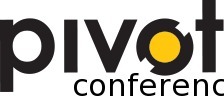
I’m looking forward to seeing you at next week’s Pivot Conference in New York. We published our formal agenda here. Our friends at doodle.ly though, decided to re-imagine the concept of what an agenda could be by visualizing portions of it as doodles! I hope you love them as much as I do…
Click here to see the original gallery.
More about our speakers here.
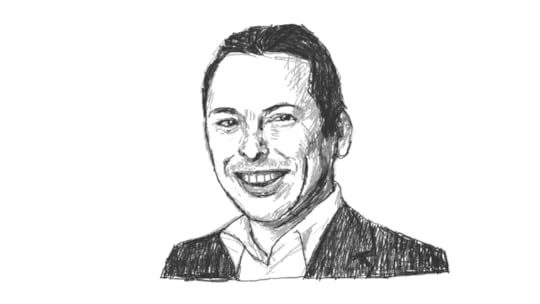
I’ve created a story arc around the importance of integrated experiences and digital transformation. We’ve hand-picked each of our speakers to share their insights and tales.

We’ll hear @STallingSmith’s side in the Privacy vs. Loyalty Showdown
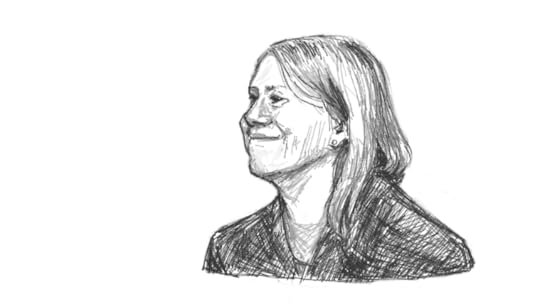
@Edyson will ask the important questions we’ve not considered in the Privacy vs. Loyalty Showdown
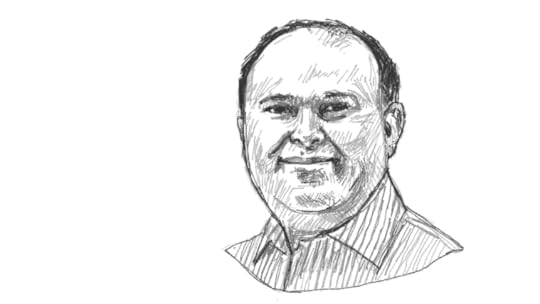
@RayidGhani will talk about the future of Big Data and what’s needed to make it work.

@SLHebner is speaking on Rapid Innovation & The Resilient Organization
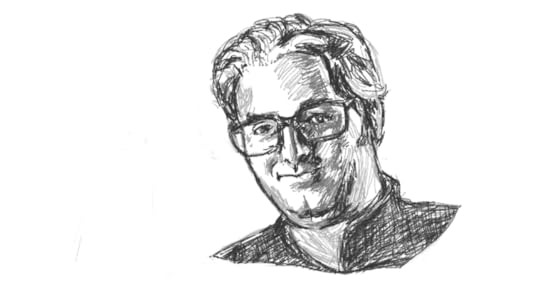
@Bre’s talk will focus on the rise of the Maker Economy
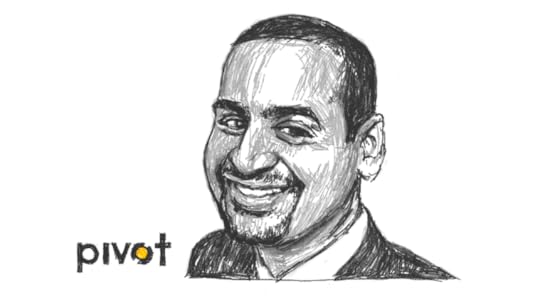
Hear @AnilDash talk about how technology and media is changing our society

The Provocation Report & Action presentation will be delivered by @JeffJarvis

@realdanlyons will be speaking about the co-creation of brands

@RebeccaHarrisDr is speaking about Integrated Experience in the Auto Industry

@ManishKJha will be speaking on Integrated Experiences in Sports
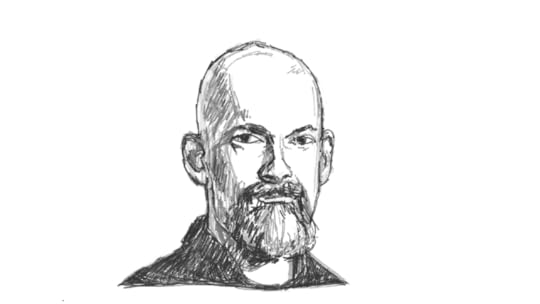
@NealStephenson will share his vision on the future of storytelling in a digital era

@HeadMonster will participate in our Innovate or Die! fireside conversation

@JListerCA will reveal how to activate and measure content
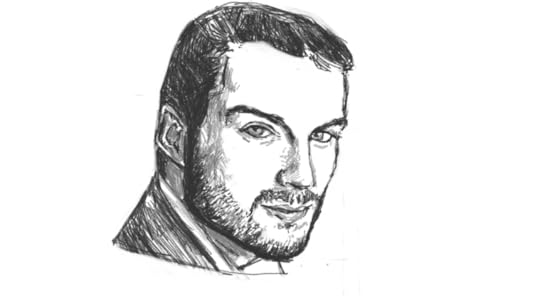
@PeteCashmore will speak to the convergence of media

Mark Anderson will take us on a journey that ties together data, economics, and the fate of nations!
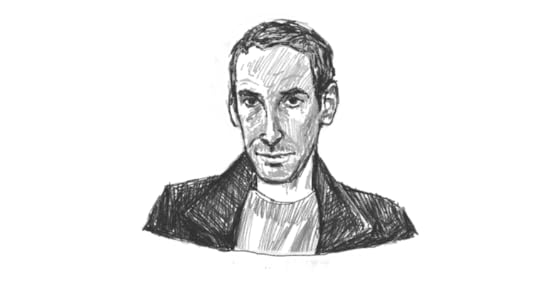
@Rushkoff will highlight the impact of a real-time economy in Present Shock

@KareAnderson will help us better understand behavioral economics
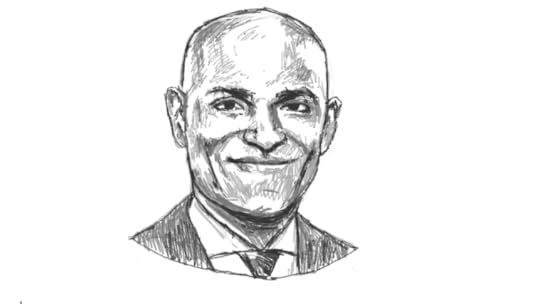
@umang_shah will be presenting on Big Data’s Transformative Power For Business & Society

@ldarcym will share insights on the Millennial generation

@Jcurran716 will reveal traits of The Connected Generation
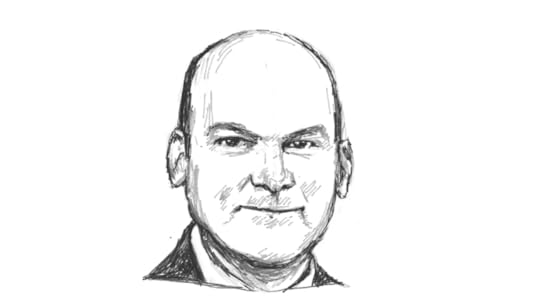
@Jconway66 will explore “The Content Conundrum: Are Ads Passe or Fundamental?”
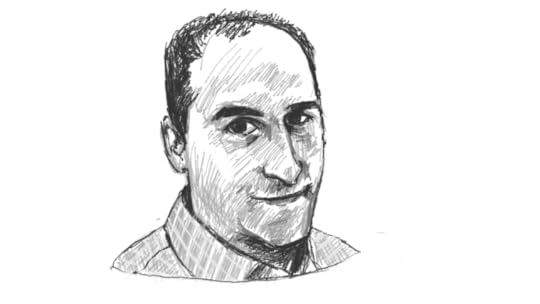
@MDScafidi contemplates advertising during “The Content Conundrum”
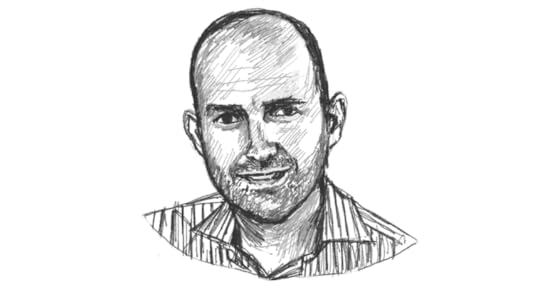
Anticipating @Samdecker’s portion of “The Content Conundrum”
See you at Pivot!
This is just a glimpse at our incredible speaker lineup at Pivot this year. Learn more about our full roster of visionaries and experts here.
Please consider registering for The Pivot Conference and use code “BrianNetwork” to save 30%.
See you next week!

October 2, 2013
A Conversation with Adobe on the Future of Marketing and Disruption
Earlier this year, I had the opportunity to present in London at a special Adobe event to celebrate the launch of What’s the Future of Business: Changing the way businesses create experiences. Immediately following the presentation, I joined Adobe’s Jeremy Waite to shoot an episode of Marketing Minute.
As the title suggests, each episode is supposed to last 60 seconds. However, this conversation wrapped just shy of 10 minutes. And, I think you’ll see way. As Adobe explains, “In this special extended version of Marketing Minutes, Brian explores the Conversation Prism, YouthQuake and growth hacking.” There’s just no way to cover that many exciting topics in one minute.
In addition, Jeremy asked some tough but important questions:
- How can marketers equip themselves to act on disruptions on the marketplace?
- What are some of the more recent disruptions in the marketplace we’ve seen and based on those disruptions how do you think we as marketers can act on the shift that we’re seeing how people are behaving online and how they’re acting with one another.
- Tell us about the Conversation Prism. What you’ve added to it and what you have changes over the previous three iterations?
- On your blog you talk #Youthquake and Generation C. Give us an overview of what’s happening with the current youth generation, what marketers can learn from youth and what the future might look like.
I do my best to answer them in this extended version of Adobe’s Marketing Minute…
My new book…#WTF
Connect with me: Twitter | LinkedIn | Facebook | Google+ |Youtube | Instagram

September 30, 2013
Visualizing the DNA of a Social Business Via Infographics
Recently, my Altimeter Group colleague Charlene Li and I published an ebook that revealed The Seven Success Factors of Social Business Strategy. To our pleasant surprise, the industry didn’t just react with positive feedback, but also with fantastic infographics that brought the core of the book to life. I wanted to share a few with you here.
Over the years, we studied businesses endeavoring to master social media at various stages. We detailed our findings in our research report uncovering that the most organizations evolve through six distinct stages on their way to social business transformation. After release, we went back through our analysis and found that businesses near or at the sixth stage of evolution collectively shared seven success factors that assisted or expedited advancement. As a result, our book played out less like a traditional business book and instead detailed the DNA of successful businesses as a reference guide, point by point, how each took the next step, and also featured stories and advice from the most advanced companies we could find.
It’s the approachability of the seven strategic factors that seemed to resonate with readers. And to be honest, the same factors can apply to the approach of any important business strategy.
The first infographic I would like to share with you was developed by good friend Vala Afshar (@valaafshar).
In a piece for Huffington Post he wrote, “Houston, we have a problem – a social business strategy problem.”
He continued, “As a CMO and an active user of social media, I am stumped at how the industry still treats social as an experiment. Majority of businesses using social media today have few clear connections between their social activities and business goals. Social media metrics, if they exist, focus instead on engagement activity metrics like ‘likes’ and ‘follows’ and not the actual business value creation like revenue, brand reputation or cost reduction.”
Introducing Vala’s interpretation of our 7 Success Factors of Social Business Strategy…
Recently, Mark Smiciklas (@intersection1) dissected the success factors and explored the very essence of each. He found that these seven factors were indeed seven genetic markers that compiled into the DNA of a successful social business.
In his post at Social Media Explorer, Smiciklas tied the seven factors to narrative gives you an at-a-glance view of your next steps, “Using a blend of research and real world client data, Solis and Li have established a social business strategy DNA – a set of strategic characteristics that are common among successful social organizations.
He went on to ask, “Does your organization have a social business strategy in place? Which of the seven success factors below are proving to be the most challenging?”
Introducing Mark’s interpretation of our 7 Success Factors of Social Business Strategy…
Finally, I would like to share with you a visualization all the way from The Netherlands by Alexis van Dam.
Unlike an infographic, van Dam created an in-depth mind map that outlines each success factor and the corresponding details of each.
The seven success factors of social business strategy mind map by Alexis van Dam from alexida
My new book…#WTF
Connect with me: Twitter | LinkedIn | Facebook | Google+ |Youtube | Instagram

September 27, 2013
The Adaptive Digital Strategy Framework
Guest post by Andrea Vascellari. You can follow him on Twitter @vascellari and visit his website at www.andreavascellari.com.
Today we still see a large number of organizations that keep struggling to align social media and new emerging communication technologies with the overall firm strategy.
Organizations should adapt, look in the mirror and recognize that they need to change because the world has changed. They should embrace new strategic frameworks to avoid getting caught up in the digital hype that hit them every day with new solutions and focus on what can actually help them achieve their business and communication objectives.
Having worked in communications for a while now, I spent a lot of time studying, piloting and learning from many different communication plans. I understood what works, what doesn’t, where digital fits into the current mix and I understood which are the elements of a plan that are, almost constantly, overlooked by organizations.
Eventually over the years I developed, and kept improving, an adaptive framework that would help me planning, executing and managing digital communication plans more effectively and efficiently. I called this framework the “Adaptive Digital Strategy Framework”.
This post explores the overall structure and process of this framework. We will understand how it functions and, indeed, why it’s called “adaptive”.
Structure and Process
In this ever-changing environment characterized by the disruptive effects of the social web, I learned that there’s no “one best way” to organize and lead an organization. Instead, the optimal performance and results depend on the process adopted by the organization to plan and execute its initiatives, and by the multitude of factors that influence it.
This is why I divide the framework in two parts. The first one defines, at a macro level, where the process lies within the overall ecosystem structure. The second describes, at a micro level, how the process actually functions.
Macro Level
Often people make a mistake when they think exclusively about the process used to plan, execute and manage a communications plan without contextualizing it. This macro bird’s-eye view helps us understand where the process is, what is connected to, what factors it is influenced by and what outcomes it generates.
INPUT
Organizational factors: Conditions of the external environment/climate and leadership style.
Human factors: Skills, knowledge and character of who works for the organization.
Social factors: Values, inspiration, behaviors of the groups of people that work for the organization.
PERFORMANCE
Organizational structure: This is about how the different activities, tasks and responsibilities are distributed within the organization.
Process: The brain and heart of our strategic planning & execution. Here we set the objectives, the strategies, the tactics, we verify the results and determine the necessary corrective actions.
Financial structure: It defines how the financial resources are allocated according to the defined objectives.
OUTPUT
Management efficiency: Quality of the management. Is the management capable of achieving a good and tangible output?
Motivation: This is what drives a person to perform a certain action or to pursue a certain objective.
Morale: Do people feel under pressure when they work or do they feel satisfied? You can think it as the “organizational climate” and it has to do with how the work environment is perceived, directly or indirectly, by the employees.
Micro Level
Now that we have a clear view of where the process fits into the equation, let’s zoom in and understand how it actually works.
It’s not easy to plan and coordinate a digital project, there’s so much to consider. The online world has brought new opportunities but also a whole new set of factors that must be taken into account. So, how should we look at these new variables? And, most importantly, which are the elements that we don’t have to forget when crafting our digital strategy plans?
Integration: The focus is on how the organization is structured around social efforts and on how social technologies are integrated with communication channels across the organization.
Planning: Goals are impossible to achieve without a plan. Whether you are working on a PR or a marketing initiative, a good plan is meant to serve as a roadmap. It’s essential for aligning the resources and prioritizing the actions of the organization as it strives to achieve its goals.
Execution: Execution is what actually brings the strategic plan to fruition. This is the result of the planning decisions made by the organization and its team.
Evaluation: The overall process, the financial and the human resources must be evaluated to ensure that the communications function is successful. Accurate measurement is vital for the deployment, maintenance and refinement of ongoing and future projects.
Internal & External: This model includes what needs to be identified, deployed or reviewed at each stage of the development process internally and externally – external communication is as important as internal communication, they are both vital for an organization’s identity and goals achievement.
Adaptiveness of the model
Needs change depending on the nature of the projects (marketing or PR, public or private etc.) so not all the elements I listed are always necessary. For the same reason, keep in mind that you can include additional elements that may have to be taken into account in different/specific contexts.
This is why this framework is defined as “adaptive”. It’s a solid digital strategy framework that keeps transforming in synergy with the present and future evolution of business.
As you can see, in addition to the classic components that characterize traditional communication plans, I included also elements that are starting to play a relevant role in strategic digital communications. Over the next weeks I will release a series of posts on my blog that will explore each element of the “Adaptive Digital Strategy Framework”. In each post I will share my point of view and I will be willing to hear what you think, what you agree or disagree with, what’s missing or what can be changed. It’s going to be a good opportunity to learn from each other and to grow together.
Together with each post of the series I will release also a podcast episode in which you will find the audio version of the post with additional audio commentary about the discussed topics. The name of the podcast is “FIR On Strategy with Andrea Vascellari”, a new podcast under the For Immediate Release (FIR) brand, that offers you guidelines and tips to help you plan, execute and manage your strategic communication plans. The first episode is already available!
Over to you
This framework is based on my experience, what would you adjust based on yours? What do you think about it? Is there something irrelevant? Is something missing? Looking at the sector you are working in, would you approach this differently? Let me know in the comments.
Andrea @vascellari
Image Credit: Shutterstock

September 25, 2013
See the World in 3-D: Dream. Do. Deserve.
Sometimes we just need a change in perspective…a change in how we see the world to shape how the world sees us.
Today is a new day. Embrace it. Make it yours.
Sound familiar?
In many ways, the prospect of a new beginning, a new chance, it’s enough to get most of us out of bed. Optimism becomes the catalyst to take on the day, every day. But, how is this day really any different than yesterday or any day prior? The answer is there. It’s right in front of you and it’s always there. At least, that’s where it was the last time.
Thought it’s never easy to discern, “the answer” is the sustenance that feeds our hunger for possibilities and aspirations. And, there in lies the riddle of life, attempting to delineate between what is meaningful versus what is nothing more than a pleasant or welcomed distraction. It’s not unlike staring at an image only to learn that within the facade exists another vision. The representations were there all along, but somehow, depending on our state of mind, context, and perception, only one initially crystallized.
For example, gaze into the image below. Let’s imagine for a moment that the likeness that comes into view is representative of what’s meaningful to you. Let’s call that the “present” for now. But look again. What you’ll see, if you clear your mind and concentrate on nothing in particular, represents the meaning that unlocks the time ahead. Something that you didn’t see before materializes.

Double Face Illusion by Humberto Machado
Depending on your powers of observation, you may have discerned the image of a person with a round nose, long face, and a slight frown facing left. . Or, perhaps you see the portrayal of a young and striking woman facing right. And, you may in fact see both.
To me, this represents what’s meaningful to me right now and in the future. It’s the constant pursuit of accepting who I am today and investing in who I want to be tomorrow. It’s as poetic as it is striking. What’s meaningful is the beauty of understanding that finding meaning is a journey not a destination or landmark.
We all share a quest for inspiration and validation. But we are seeking more than meaningless platitudes or the sermons by trendy or shallow self-help experts. To grow, we need substance and direction.
There are no easy answers. Even when those answers are in front of you, it takes resolve to see the hidden path behind the course you initially perceive to be the right way. It then takes vision and courage to take the unknown next steps in a direction that most do not see or will not follow.
The distance between who you are and who you want to be is separated only by your aspirations and actions.
Dream
Uncover what is meaningful to you in the long term and what you aspire to become.
Do
Do the things that bring your dreams and your vision to life…even if it’s iterative. It’s the sum of the parts that contributes to the whole and the outcome.
Deserve
As you act, react, and persevere, you discover the secret to defining your own destiny follows the laws of physics, for every action there is an equal and opposite reaction. The more you do, the more opportunities you unlock. You earn what you deserve.
This is your time!
So…Dream. Do. Deserve.
My new book…#WTF
Connect with me: Twitter | LinkedIn | Facebook | Google+ |Youtube | Instagram
Originally published at LifeByMe





